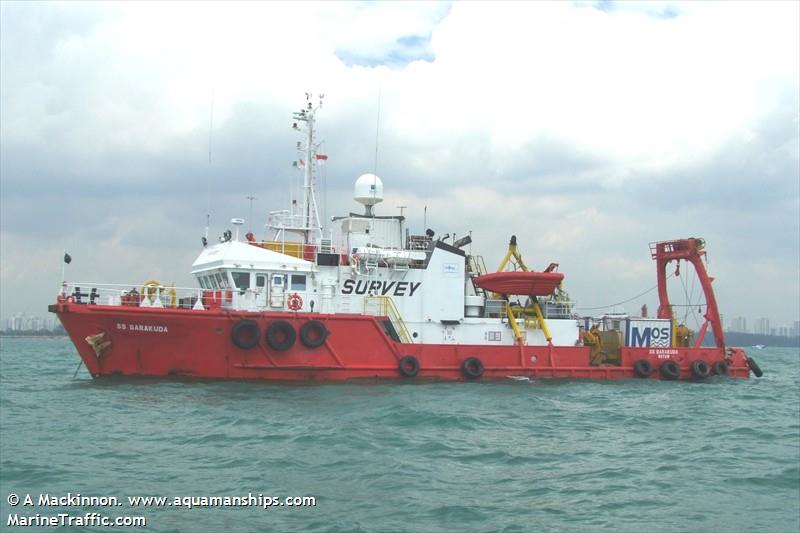I mentioned in previous posts that an unmanned trip of Deepsea Challenger might precede the one with James Cameron aboard. The project announced today that Challenger did make the trip on its own, earlier this week.
If the seas are calm enough to allow a safe launch, the world's first solo manned trip to the Challenger Deep could come this weekend.
Running it to the bottom for an all-up systems check was a good idea, since the team had only been able to verify the integrity of individual components in Penn State's 60-inch pressure chamber at ARL. Testing components can't verify the myriad of connections between them (such as breakers, buses, and logic controllers). These connections have often the source of problems. As a New York sandhog once told me about his job, "None of this is worth dying over."
Though no details on the unmanned trip have been offered, one can speculate that the team dropped the sub at the end of a steel cable, perhaps exercised the mechanical systems for a few hours, and hauled it back up to peek for leaks.
Less likely: they just heaved the sub in the ocean and waited for the automatic systems to send it up from the bottom. The reason I say that is that it's absolutely critical to slow the speedy descent before hitting the bottom. That's something the pilot normally does about a half hour beforehand, by dumping ballast shot from the trim hopper (see previous posts).
I haven't heard whether this week's dry run pointed to any tuneups, but it's likely. You've heard the term "pushing the envelope" from The Right Stuff; it's perhaps wiser to nudge the envelope, rather than push it. That's what the team has been doing, proceeding in nudges rather than heaves.
The mission will jump off from two ships: Mermaid Sapphire for Cameron's sub, and Barakuda. Barakuda hasn't gotten much attention, as a Google search will tell you.
There are several vessels under the Barakuda name, but it's probably this support vessel, photo courtesy of MarineTraffic:
Why a second mother ship? One of the important innovations in Deepsea Challenge is the use of separate undersea platforms called landers, which need their own mother ship.
They'll give a "you are there" feeling to the mission video, unlike anything Trieste was able to do. Think of the difference: Trieste was certainly historic in its achievement, but brought back very little information from the tiny spot it could survey.
In fact, the apparent lack of interesting stuff in the abyss was one reason that further ultra-deepwater exploration efforts languished for years afterward. Trieste had two men peering out of a tiny porthole for less than half an hour, as they sat in one spot. No pictures were taken. Visibility was bad to horrible, given the narrow field of view, the harsh and short-ranged lighting, distortion from the thick curved Plexiglas, and silt clouds. Trieste was a "flag on the peak" event, with most of its value delivered in the form of technological improvements.
Deepsea Challenger not only has enormously better imaging power, it will work in tandem with two landers. The mission plan is to drop the two landers ahead of time from Barakuda, a couple of miles from Mermaid's location, and park them there to attract sea animals with bait, so that Cameron can cruise over and sneak up on them later. The landers are able to spend more time on the bottom than Cameron can.
Here's a pic of one:
From what I gather on the project's technology page, the landers have no tether to Barakuda, so I'm not expecting real-time video. Cameron will be able to trigger some lander functions from his sub, presumably using acoustic signals; I would class them as non-mobile remotely operated vehicles, or ROVs.
One challenge built into the mission, and one which Cameron discussed in the expedition journal, is finding the things off in the dark. As he wrote in his email to Don Walsh, one time his sub's sonar malfunctioned and he couldn't complete the lander rendezvous.
The landers have the potential to add much value to the science mission. For example, a lander can set out a baited trap, and the trap will go up later on its own, after the separation of a burn wire (aka galvanic timed release -- see my previous posts).
The landers will float to the surface after releasing their ascent weights, and a set of beacons will lead Barakuda to them for recovery.
One of the landers has a full set of 3D cameras similar to those on the Challenger, and will film the manned sub in action.
So there are a lot of moving parts in this manned mission, but also a lot of money and expertise. Looking down the road, I think a fleet of such unmanned landers would be a boon to oceanography.



No comments:
Post a Comment